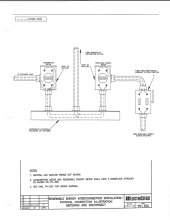realpinochet
Make Stuff In America Again!
- Joined
- Jul 4, 2022
- Messages
- 554
I've been looking at the xwpro and radian systems which would be paired with a charge controller DC coupled...A traditional system. But, I ran across a article about AC coupling which from the way it read is where you have a string inverter that coverts PV DC to AC and then Injects that AC into a main panel. It seems like AC coupling wasn't meant to be paired with a battery and just merely offset electric grid draw in the daytime. The xwpro, solark, raidan etc was listed in the article as a battery inverter as opposed to a PV inverter. The reason I'm curious about AC coupling is the article said it's more efficient if your daytime load is high because you don't have to convert from DC to AC like a battery inverter. But, isn't that exactly what's a happening; you still have a inverter converting DC from the panels into AC. What's so much more efficient than having the DC from the charge controller being converted to AC by the battery inverter as it arrives in on the bus? Since I run a 4ton AC in the summer constantly I was thinking of looking into this AC couple way of doing things. Like I said it appears like string inverters don't really have a way to attach batteries so in my case I'd have to do something called AC/DC coupling? Schneider / Radian shows a way of doing it where you plumb in the output of the AC string inverter into the AC output load side of the battery inverter thus injecting AC into the loads side. From reading about this it seems cumbersome and potentially dangerous as this solution requires phase shifting to tell the string inverter to shutoff if too much power is being produced and the batteries are full and this seems to be fickle and might blow batteries up.
I found where another person just separated his loads he wanted AC coupled to a sub panel and put the string inverter there so he didn't have to AC couple his DC coupled setup. For those that have AC coupled by itself or with a traditional DC coupled solution is it worth it?
I found where another person just separated his loads he wanted AC coupled to a sub panel and put the string inverter there so he didn't have to AC couple his DC coupled setup. For those that have AC coupled by itself or with a traditional DC coupled solution is it worth it?



